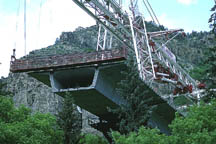STRUCTURAL ENGINEERING
Kavanagh Lecture - Abstract
April 2, 2009
Local Sediment Scour at Bridge Foundations
by
D. Max Sheppard
President, Ocean Engineering Associates, Inc.
Professor Emeritus of Civil and Coastal Engineering,
University of Florida
ABSTRACT
Bridges over water bodies have been an integral part of societies’ infrastructure over recorded history. Today, bridges are not only essential elements of roadway systems but also architectural sculptures that grace the landscape in many parts of the world.
Most bridges over water have piers that are either located in water or are subjected to flowing water during storm events. If the sediment in which the piers are founded is erodible then there is the potential for a lowering of the bed during the life of the bridge. It is essential that accurate estimates of the maximum potential bed lowering during the expected life of the structure be established and used in the design of the foundation.
The amount of bed lowering is needed for 1) the design of new bridges and 2) assessing the integrity of existing bridges. Under prediction can result in vulnerable existing bridges not receiving needed scour protection and insufficient pile penetration for new bridges. In both cases there is the potential for failure or even loss of life during a design flow event. Over prediction can result in unnecessary scour protection or over design, both of which can waste millions of tax payer dollars.
Even though engineers have been aware of sediment scour for many years, it was not until the middle of the twentieth century that concerted efforts were made to quantify scour depths as a function of flow, sediment, and structure conditions.

